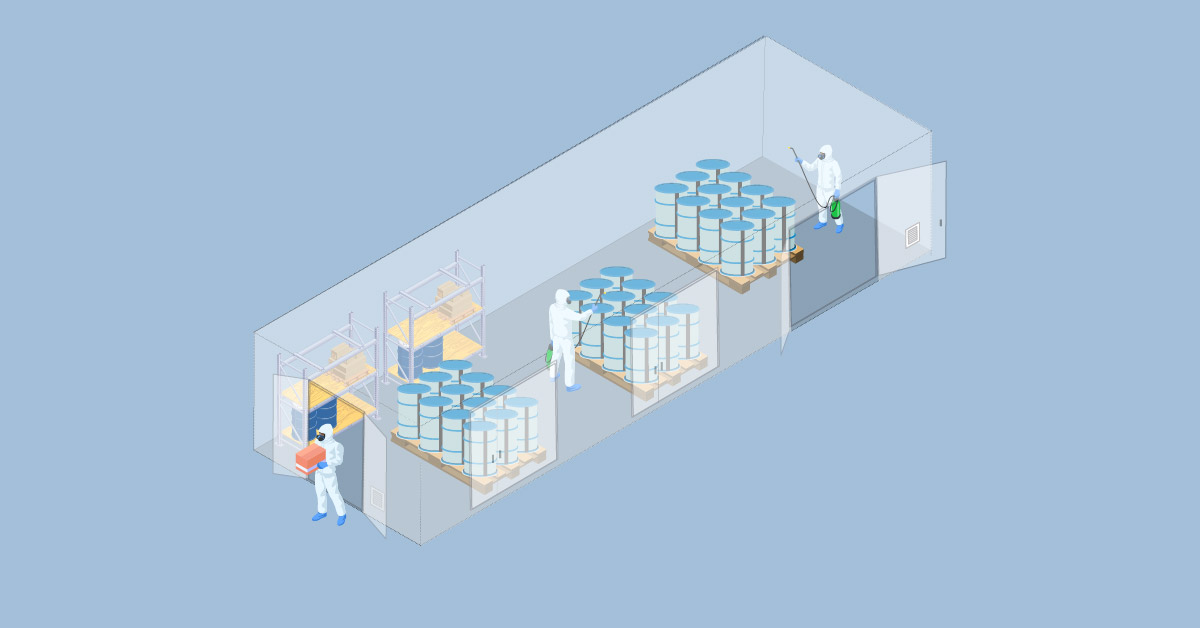Key Considerations for Your Chemical Storage Building Design


In certain industries, the use and handling of hazardous materials is commonplace, even if few people want to think about hazardous chemicals and their use in manufacturing everyday products. Those in manufacturing or refining understand the importance of these materials and the role they play in helping make our lives, in many ways, and in many industries, easier.
At RedGuard, we have been designing modular solutions for our customers, centered around safety, since 1998. Blast-resistant buildings to protect and accommodate people and equipment have been our focus since 2005. The addition of our RedGuard VersaBilt Chemical storage buildings in 2021 falls in line with our track record for safety, and they make environmental compliance safe and easy for those looking for hazardous material storage solutions.
Here are a few answers to some commonly asked questions.
What is a chemical storage building?
A chemical storage building, also known as a hazardous material storage building, is most commonly used to store or dispense flammable liquids like acetone or alcohol. They can also be used to store or dispense corrosive liquids like acids or toxic materials like pesticides.
They are designed to contain a fire or a spill and keep the material out of the environment. They are provided with accessories for ease of storage and to keep the materials at the correct temperature.
How to determine what kind of chemical storage building to buy
Chemical storage buildings generally come in three types; non-combustible steel, 2-hour, and 4-hour fire rated. If chemicals are dispensed, a building will often require explosion vent panels. 'Dispensing' could refer to the pouring of solvents into smaller containers, or similar processes.
There are four major considerations in determining the building design and accessories:
- What is the chemical(s) being stored or dispensed? Various chemical classifications include flammable, combustible, corrosive, and toxic. A thorough review of the material safety data sheets (MSDS) should be done for building selection.
- What volume of material is being stored or dispensed? Various codes will consider the volume to determine building construction and secondary containment sump volume. The material amount will also be used to determine door size and location or the requirement for containment shelving.
- Are the chemicals being stored, or stored and then dispensed? As mentioned above, dispensing chemicals often requires explosion vent panels because open dispensing could create a cloud of flammable or explosive vapor that could ignite unexpectedly.
- What is the proposed location for your chemical storage building? The desired distance of the dispensing area, in relation to other occupied buildings on your property, will determine the construction of the chemical storage building. For example, if it is less than 5 feet from another structure, the building will likely need a 4-hour bi-directional wall construction. In addition, if the installation requires explosion vent panels, there are additional rules about the location of the panels relative to other buildings on the property.
Just some of the relevant codes for chemical storage buildings include:
- National Fire Protection, NFPA 30
- Factory Mutual, FM 6049
- Occupational Safety and Health Administration, OSHA 29 CFR 1910
- Uniform Fire Code
- International Building Code
- International Fire Code
A good first step in determining your code-compliant storage design is to contact the industry experts at RedGuard. We will review your application considering the latest versions of all relevant codes. Then, with a code-compliant quote from RedGuard, you can review the plan with your LAHJ and be well on your way to the safe storage of all your hazardous chemicals.
Eric Rienbolt
Eric Rienbolt lives in Central Illinois and is the North American Sales Manager for RedGuard. He has been with the company since 2012, in several different capacities within the sales department, including extensive work with custom projects.

